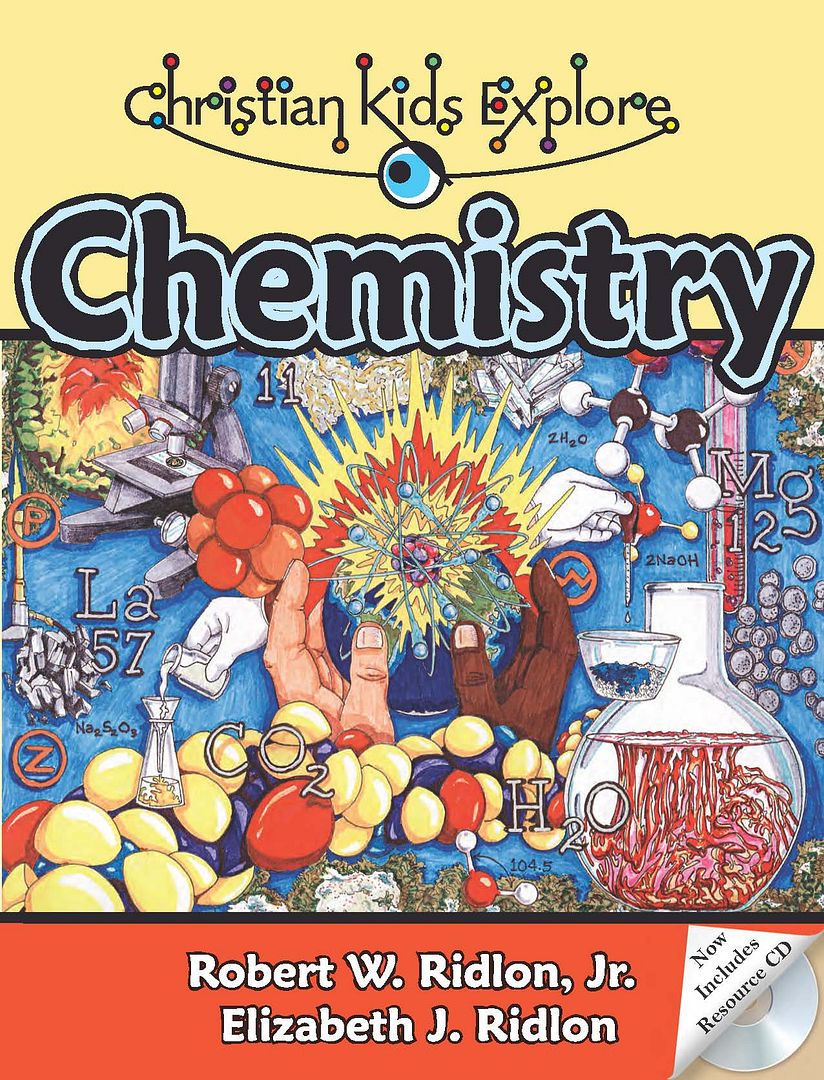

The Christian Kids Explore Chemistry text is broken down into five units with a total of 30 lessons.
- Unit 1 : The Basics of Chemistry
- Unit 2: Atoms and Molecules
- Unit 3: The Nature of Chemistry
- Unit 4: States of Matter
- Unit 5: Organic Chemistry
- Teaching Time – Presents the lesson material and concepts
- Review It – Consists of five fill-in-the-blank review questions
- Hands-on Time – Related activity to reinforce material and allow exploration
- Think About It – Two to four questions to get students to think more about what they learned from the activity
The recommended schedule is to cover one lesson a week over two days, 60-90 minutes each day. This particular text targets grades 4-8, and it is suggested that the teacher read the lesson in advance and present the material to younger students, where older students should be able to read and comprehend independently.
You may view sample pages from Lesson One to get a better idea of the structure for each lesson. A materials list for the complete text is also available. You will notice that most of the items are likely already in your home or are otherwise very accessible.
Also included with the text is a Resource CD. Categories of Lesson Plans, Reproducibles, Supply Lists, Literature, Catalog, and Contact are included. I found the most useful of these resources to be the Lesson Plans, which also listed supplemental readings from the Kingfisher Science Encyclopedia.
When I first looked over the text, I felt that the material may be on the light side for my 7th grader. The lesson material is very short, often only a couple of pages. The review questions are exact quotes and unambiguous answers directly from the text. Many of the hands-on activities don’t really compare actual lab experiments.
However, when I asked my son what he liked about the text, the first thing he mentioned was that the questions were straight-forward and not numerous. This is an area where he’s been struggling with his current science curriculum, which tends to be very conversational with questions that aren’t always direct. Even though my son knows the material very well, his black-and-white personality sometimes gets frustrated with the extra and unnecessary details.
Even though the lesson content is on the skim side, my son does better with shorter segments and having a just a few pages of new material per lesson gives him a sense of accomplishment. The reading can easily be completed in one sitting, rather than needing to break it up over several days. There is something to be said for confidence. While I still feel that it is on the light side overall for a 7th or 8th grader and much more suited for a 5th or 6th grader as it, some of the later lessons do present more complicated material. For older children, adding in some additional resources (e.g. the Kingfisher Science Encyclopedia recommended in the Lesson Plans) would help build on the foundation provided in the text. There are also additional resources listed in the Appendix, though may of those appear to be geared toward younger students. If I were to use this with an older student, I would also consider additional resources for added experiments.
For the late elementary grades, the Christian Kids Explore series appears to be a very easy-to-use and thorough curriculum of introductory science topics from an unabashedly Christian perspective. Even though supplementation may be needed, depending on ability of the student, for mid-to-late middle schoolers, your older student may appreciate the clear language and shorter segments as an introduction and foundation to the topic.
Christian Kids Explore Chemistry is available at the Bright Ideas Press website for $39.95.
Disclaimer: This review was provided as a result of my participation in The Old Schoolhouse Magazine Crew. I was provided the product free of charge in exchange for my honest review. I have received no other compensation. I strive to give a balanced overview of each product, detailing my opinion of both pros and cons and how the product worked for my family. What works for one family may not work for another. I encourage you to read reviews of other Crew members and research sufficiently to determine if any product will be a benefit to your homeschool. You may read more reviews on this product by visiting here.
No comments:
Post a Comment